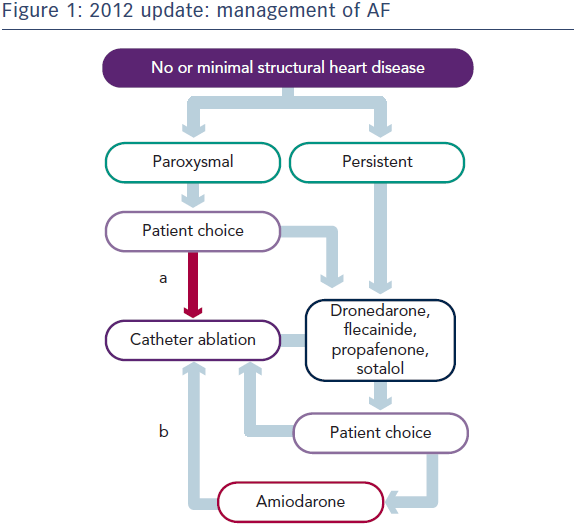Introduction on Rhythm Management of the Atrial Fibrillation Patient: Practical Implementation of the 2012 ESC Guidelines
Atrial fibrillation (AF) is the most common arrhythmia and is associated with increased risk of stroke, heart failure and mortality.1 Following increased therapeutic options for AF, an update in guidelines for management of AF has been published. A symposium, chaired by Karl- Heinz Kuck, Hamburg, Germany, was held at the European Society of Cardiology (ESC) congress in Paris on the 2nd September 2014. It aimed to inform cardiologists of the 2012 ESC guidelines and also to foster a “shared care” approach between electrophysiologist and cardiologists.
was held at the European Society of Cardiology (ESC) congress in Paris on the 2nd September 2014. It aimed to inform cardiologists of the 2012 ESC guidelines and also to foster a “shared care” approach between electrophysiologist and cardiologists.
An update of the 2010 ESC guidelines for the management of AF, developed with the European Heart Rhythm Association, was published in 2012.2 The definitions of AF are: paroxysmal AF (PAF) is AF of duration 48 hours or less but a maximum of 7 days. Permanent AF is AF that persists for at least 7 days or requires a cardioversion, or long standing persistent AF lasting more than a year, as well as permanent AF in which physician and patient accept that AF should not be converted.3 The ESC guidelines have incorporated patient choice into the treatment paradigm (see Figure 1). In addition, for the first time, the guidelines state that catheter ablation is recommended in patients who have symptomatic recurrences of AF on antiarrythmic drug therapy and who prefer further rhythm control therapy (class I recommendation). Catheter ablation should be considered as first-line therapy in selected patients with symptomatic PAF as an alternative to antiarrhythmic drug therapy (class IIa). These recommendations follow a clinical trial that demonstrated that, among patients with PAF without previous antiarrhythmic drug treatment, radiofrequency ablation resulted in a lower rate of recurrent atrial tachyarrhythmias at 2 years compared with antiarrhythmic drugs.4